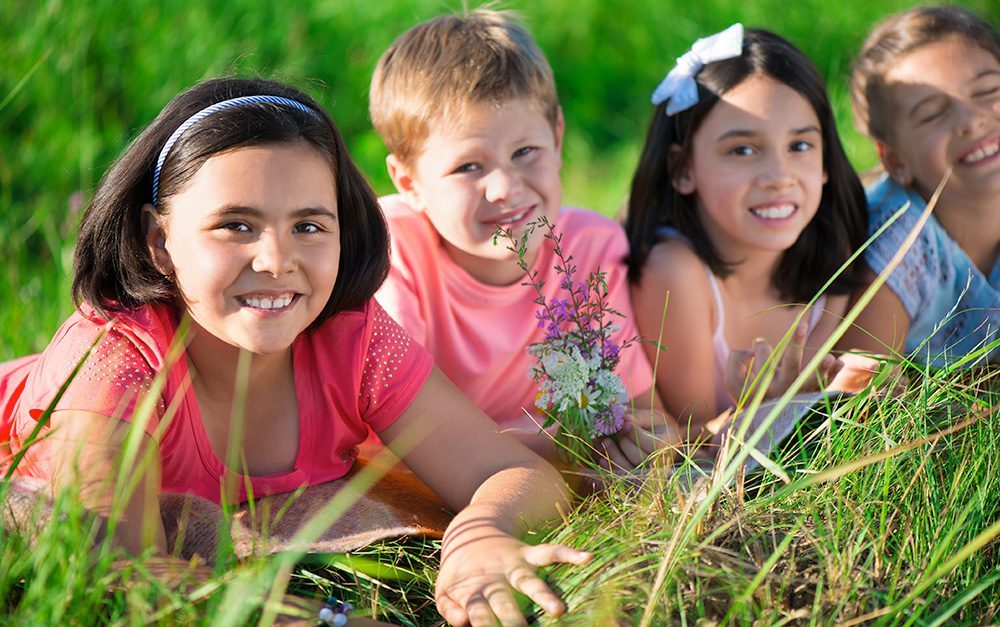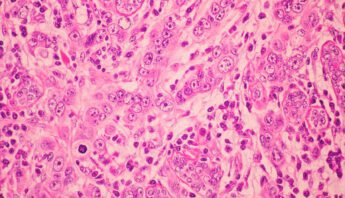The science leaves little room for doubt: children exposed to pesticides either in utero or during other critical periods may have lower IQs, birth defects and developmental delays, and face higher risk of autism spectrum disorder, ADHD and cancer.
The fact is, pesticides and other toxic chemicals are undermining our children’s health.
Exposed & vulnerable
 Pediatricians have understood for decades that children are more vulnerable to health-harming chemicals than adults. Infants and children interact with their environment much differently — such as learning through touch, and hand to mouth behavior.
Pediatricians have understood for decades that children are more vulnerable to health-harming chemicals than adults. Infants and children interact with their environment much differently — such as learning through touch, and hand to mouth behavior.
They also have speedier metabolic rates, which means they take in more water, food and air. And their bodies are less able to detoxify and expel harmful chemicals.
In short, children are absorbing a higher load of pesticides at a time when their bodies are still developing, and are thus least equipped to protect themselves.
The American Academy of Pediatrics points to pesticide residues on food as the most critical route of childhood exposure. Other important ways children take in pesticides:
- In the womb: When a fetus is exposed to certain chemicals at particular times — as the brain is under construction, or organs are taking shape — the normal process of development can be derailed, with sometimes irreversible effects.
- At home & daycare: If pesticides are used in homes, lawns or gardens where an infant or toddler is exploring the world, exposure is a near certainty.
- On schools & playgrounds: Use of toxic chemicals to control pests in schools, and on playing fields can make the school environment less than safe for growing bodies and developing minds.
Rural children are especially at risk, as they may also face pesticides drifting from nearby agricultural fields into their homes or onto school grounds — or contaminating the water they drink every day.
A “silent pandemic”
 Public health specialists are calling for action to address the “silent pandemic” of neurodevelopmental problems affecting children around the world today — from learning disabilities to ADHD and autism.
Public health specialists are calling for action to address the “silent pandemic” of neurodevelopmental problems affecting children around the world today — from learning disabilities to ADHD and autism.
As our A Generation in Jeopardy report highlights, pesticides are a significant contributor to the crisis. Study after study shows that pesticide exposure — particularly during pregnancy and early childhood — can derail brain development in significant and lasting ways. For example:
- A seminal study of Yaqui Indian children in Mexico found that an array of impaired brain and nervous system functions, including social behaviors and the ability to draw, are correlated with pesticide exposure during development.
- Several studies have linked pesticide exposure during pregnancy and early childhood to increased likelihood of a child being diagnosed with ADHD. One found that eating foods coated with organophosphate pesticides — even when residues are scant — can increase this risk.
- Using MRI technology, researchers found that in utero exposure to the widely used insecticide chlorpyrifos changed the architecture of the brain.
These are just a handful of the many studies linking even low levels of pesticide exposure with harm to a child’s developing nervous system. With evidence piling up quickly, public health experts are now calling for preventative global action.
The stakes are high. As Dr. Philippe Grandjean from Harvard School of Public Health notes, “You only have one chance to develop a brain.”
Childhood cancers on the rise
 Children should not be battling cancer, period. Yet more and more are doing exactly that, and government data confirms that U.S. childhood cancer rates are higher than ever before, and climbing.
Children should not be battling cancer, period. Yet more and more are doing exactly that, and government data confirms that U.S. childhood cancer rates are higher than ever before, and climbing.
In fact, cancer is now the second most common cause of death among U.S. children between one and 14 years of age, according to the National Cancer Institute. And we know that cancer-causing chemicals play a part in this frightening upward trend.
As we document in A Generation in Jeopardy, many recent studies link pesticide exposure to the most common childhood cancers, including leukemia, brain tumors and neuroblastoma.
Researchers have found that exposure during key windows of fetal development or parental exposure before conception are particularly important. They’ve also found that children who grow up in agricultural areas with heavy pesticide use have a “significantly increased risk” of developing cancer.
Improved cancer treatment means more and more children are surviving cancer. But as PAN’s Executive Director (and mother of two) Kristin Schafer says, it’s time to focus on preventing childhood cancer — because “kids shouldn’t have to be that brave.”







